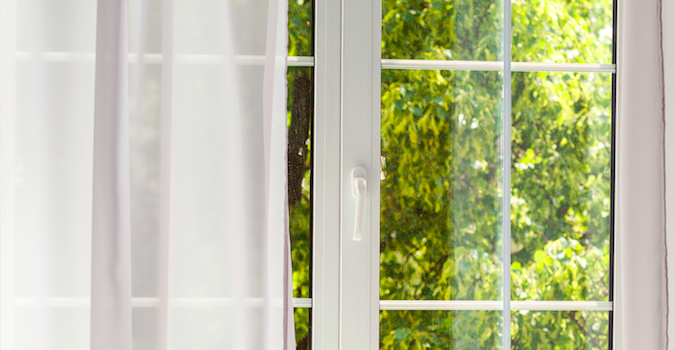
There are several main types of material that window frames can be made out of: wood, metal and uPVC. Can they be used interchangeably? Is it simply an aesthetic consideration? Or is there a ‘better’ type of frame? Let’s take a closer look.
Wooden window frames
Wood has been used to make windows for far longer than any other material. There are several big advantages to using wood.
Advantages of wooden windows:
- Wood is more likely to fit in on a period property, and may be stipulated by building regulations in some areas.
- Wood adds a lot of style to your home.
- If maintained well, wood will last much longer than PVC.
Disadvantages of wooden windows:
- Wood is around twice the price of cheaper PVC windows.
- Wooden windows require more maintenance to keep them in good condition.
uPVC window frames
uPVC or plastic windows have become the default frame for modern double glazing. They are relatively cheap and highly effective, but they do have some downsides.
Advantages of uPVC windows
- uPVC is usually the cheapest option
- PVC requires very little maintenance
- It has good thermal performance, even at the lower end of the market.
Disadvantages of uPVC windows
- More difficult to repair.
- PVC, especially white PVC, can discolour as it ages with exposure to sunlight.
- It is environmentally less sustainable and more difficult to recycle
- Lifespan is shorter than other types of window frame.
Aluminium and steel window frames
There are varying types of metal frames, but many of the benefits are similar, so we have categorised these together.
Advantages of metal window frames:
- Long lasting and durable frames
- Recyclable and reusable in most instances.
Disadvantages of metal window frames:
- Whilst recyclable, more CO2 is produced in the making of these frames, and the embodied energy from making them is also much higher.
- Steel requires regular maintenance to protect against corrosion.
- Lower thermal performance than PVC.
What should I bear in mind when buying new windows?
Although it will depend greatly on the manufacturing and design of the frame, we can make some broad generalisations as to the performance of the windows. As with any insulating product, the all-important figure is the U-value. This number, very simply, gives you one figure which accurately describes how good the product is at preventing heat from moving through it. The lower the number, the better the performance. Older double glazing might have a U-value of 2 or more, whilst new double glazing will likely have a U-value at 1.4 or lower. The very best double glazing on the market will have a U-value of around 0.7. Generally speaking, uPVC windows will have a better performance at a price point than the other types of window. It is possible to achieve these sorts of ultra low U-values with other materials, but the cost will likely be higher. Always check the U-value of your new windows before you get them installed, to make sure you are getting a high-performing window.
Think we missed something? Do you have a different opinion?
Comment below to get your voice heard…













No Comments yet! Be the first one.